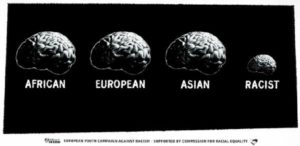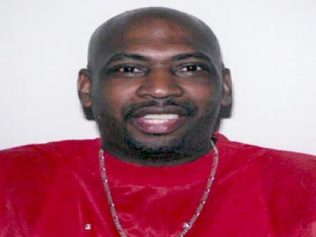
One question is whether this is simply an issue of racist police officers who respond out of their own personal animosity towards Black people. Surely, there are overtly racist police officers who target, arrest and kill Black people, and are known members of white supremacist groups. What neuroscientist Bobby Azarian, creator of the blog, Science Is Sexy, suggests is that there is an underlying neuroscientific and psychological explanation for the ways in which white cops react towards Black men.
“Without actually being inside the cop’s mind, there is no way to know for sure, but we can know for certain that many similar situations have transpired where white officers acted on gut instinct, and not out of animosity towards African Americans,” he wrote in Raw Story.
Azarian points out the distinction between implicit and explicit racism. While the former is a subconscious bias that causes people to treated people differently based on race, the latter is conscious and intentional. Moreover, with implicit racism, Azarian argues, white officers may truly believe they are not racist, yet they believe Black men are a threat for certain behaviors that would not draw suspicion with white men. The neuroscientist gives examples of scientific studies that bear this out. This is not to condone or promote certain police behavior, but rather to help us understand and provide a context.
One example is an Implicit Association Test. As Chris Mooney reported in Mother Jones, the test, which is available at UnderstandingPrejudice.org, has subjects pair words with faces that appearing on the screen and categorize them with positive or negative connotations. So, the subject is asked to categorize faces flashing on the screen as “African American” or “European American,” while also simultaneously classifying words that appear as “good” or “bad.” When the person is associating Black faces with so-called “bad” words, then you have implicit bias. Extending this concept to the realm of police violence and the shooting of unarmed Black men, one not need be overtly racist, as intent is not the issue. Mooney suggests that once we understand the psychological underpinnings of bias, we can train our minds to do the opposite. For police officers who overreact when confronting Black faces, this could prove to be useful information.
Meanwhile, other experiments deal with attention bias, in which people will draw their attention towards a threatening object around them. Specifically, within the context of race, whites perceive Black faces as a threat, regardless of whether the expression on the Black face is threatening or not. The findings of a report on the subject were published in the Journal of Experimental Social Psychology in 2008. The study, called “Attending to threat: Race-based patterns of selective attention,” found that whites had negative perceptions towards Black faces as opposed to white faces. However, the racial bias was eliminated when the Black faces avoided eye-gaze.
The authors of the study are concerned about the stereotype of young Black men as criminals and how this “is deeply embedded in the collective American consciousness (and unconscious).” The report notes the impact of these stereotypes on public policy and institutional racism, such as disparate punishments for crack and powder cocaine, and white ex-felons having better job prospects than Blacks with no criminal record.
“The reformation of such racially-yoked policies may be the only way to counter, and perhaps even change, this prevailing stereotype that is so deleterious to the health, wealth, and well-being of young Black American men,” the report concluded.


